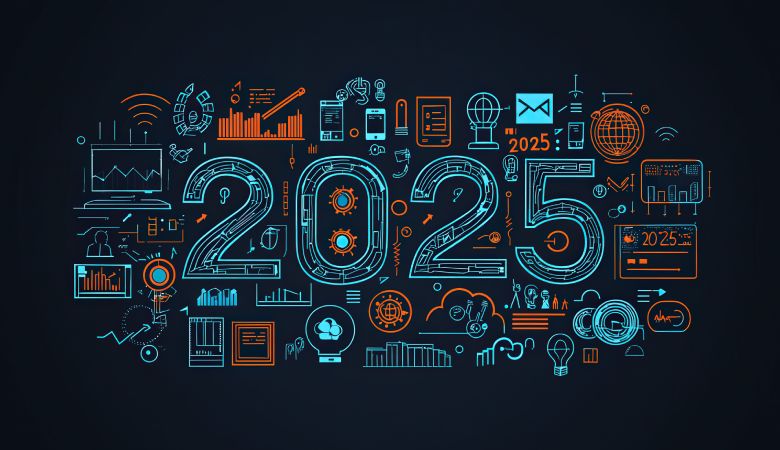2025 Marketing Trends Compared to 2024: What’s Different?
Just when we think we’ve cracked the marketing code, the game shifts — again. As marketers, we’ve all felt that scramble to catch up as new trends emerge overnight and audience behaviors evolve faster than ever.
Staying current isn’t just a nice-to-have anymore — it’s essential if we want to stay relevant, connect meaningfully, and keep growing. That’s why we’ve pulled insights from industry experts and HubSpot’s latest research, bringing you a clear snapshot of where marketing is headed in 2025.
Ready to see what’s shaping the future? Let’s dive in.
What’s Shaping Marketing in 2025: Key Trends You Can’t Ignore
1. Younger generations are driving marketing decisions
In 2025, brands are narrowing their focus to younger consumers—especially Gen Z and Millennials. The shift isn’t just a trend—it’s a strategic pivot. Older generations like Gen X and Boomers are seeing far less attention from marketers than just a year ago. And there’s a strong reason: Gen Z is on track to lead global spending growth over the next few years, with projections suggesting an increase of nearly $9 trillion worldwide.
As their influence rises, brands are rethinking everything from messaging to product design to better align with the values and preferences of these younger, digital-native audiences.
2. Brand values matter more than ever
Consumers today, particularly younger ones, aren’t just buying products—they’re buying into what a brand stands for. Shoppers increasingly want to align themselves with businesses that reflect their beliefs, whether sustainability, inclusivity, or authenticity.
More companies are moving toward brand-led marketing, placing their core values front and centre. One recent example is Nike’s campaign celebrating women in sports. It’s not just about the products—it’s about standing behind a mission and using marketing to express that commitment clearly and consistently.
3. Visual storytelling is leading the content game
Short-form video continues to dominate in reach and ROI, but in 2025, it’s not just TikTok-style clips making an impact. Visual content across the board—images, live streams, infographics—is being used to communicate brand stories faster more emotionally resonantly.
Marketers focus on visual-first strategies because attention spans are shrinking, and visual content can be easily repurposed and adapted across channels. The ability to turn a single video into multiple content assets makes it an innovative and scalable approach for modern campaigns.
4. Micro and nano influencers are taking the spotlight
While celebrity and mega-influencers may still have reach, smaller creators are gaining more trust with niche communities. These micro (10k–100k followers) and nano (1k–10k followers) influencers typically engage more directly and authentically with their followers, which leads to better results for brand partnerships.
In 2025, more brands will tap into these hyper-engaged audiences to drive awareness and conversions in a more organic, targeted way. It’s no longer just about who has the largest audience—it’s about who has the most influence within their niche.
5. Social platforms are evolving into shopping hubs
Social media is no longer just a place to build brand awareness — it’s quickly becoming a go-to shopping destination. Platforms like Instagram, Facebook, and TikTok are doubling down on in-app shopping tools, allowing users to browse, discover, and purchase without ever leaving the app.
This evolution in social commerce is changing how consumers shop. Younger audiences, especially Gen Z, are increasingly using these platforms as product discovery engines. From viral short-form videos to influencer product hauls, shoppers are learning about — and acting on — purchases faster than ever. For brands, this means that integrating commerce into social content is no longer optional — it’s an essential part of the customer journey.
6. First-party data and privacy updates are changing the way marketers operate
Increased privacy regulations and data-sharing restrictions are reshaping how marketers collect and use customer information. Changes driven by government policies and tech giants alike are making it harder to rely on third-party data, pushing businesses to rethink their approach to audience insights.
These new boundaries, while positive for user privacy, are making it more challenging to ensure data accuracy, build trust, and tailor campaigns effectively. Yet, data remains at the core of successful marketing — it’s how brands measure impact, understand audience behavior, and optimize their strategies.
To adapt, marketers need to focus on building stronger first-party data systems and using analytics tools that emphasize transparency and consent. The goal now is to gather meaningful insights directly from customers in a way that respects their preferences while still empowering smart decision-making.
7. AI will become an even bigger part of marketing workflows
Artificial intelligence has already made its mark, but in 2025, it’s poised to become an everyday tool in the marketer’s toolkit. With the growing demand for personalized, high-volume content,
AI offers an efficient way to keep up — whether generating blog ideas, writing ad copy, designing visuals, or streamlining audience targeting.
While concerns around accuracy, ethics, and creativity still exist, many marketers are actively experimenting with AI to support — not replace — their strategies. The focus isn’t just automation but augmentation: using AI to enhance creativity, speed up production, and analyze performance faster.
As competition increases, those who effectively integrate AI will have a clear advantage in terms of output, adaptability, and campaign precision.
Partner with our Digital Marketing Agency
Ask Engage Coders to create a comprehensive and inclusive digital marketing plan that takes your business to new heights.
Stay Ahead by Embracing the Trends
Now that you’re in the loop, it’s all about staying curious, flexible, and ready to adapt. Marketing never stands still — but if you keep an eye on evolving trends and remain open to shifting strategies, your brand will be in a strong position to grow.
And if all of this feels like a lot to take in, you’re not alone. Keeping up doesn’t mean doing everything at once — it means knowing where to focus and being willing to learn along the way.
Stick around—in the weeks ahead, we’ll be breaking down more marketing insights and strategies to help you stay one step ahead of the game.







